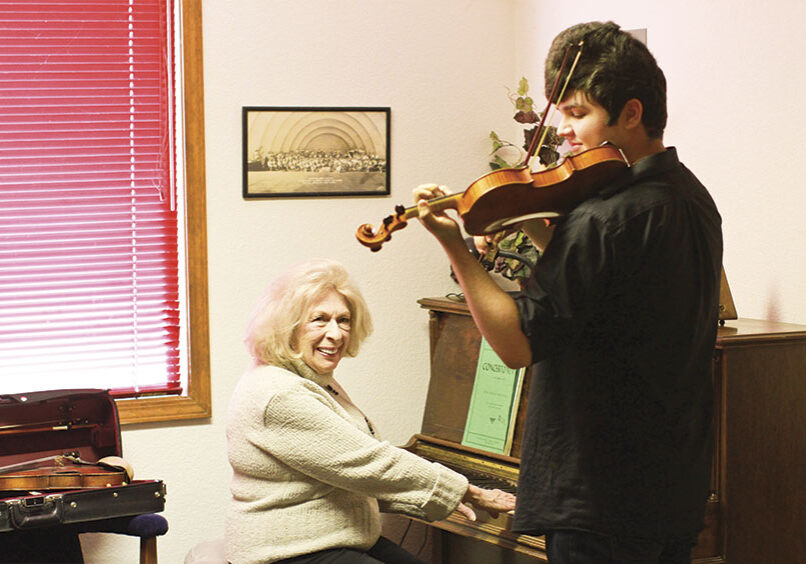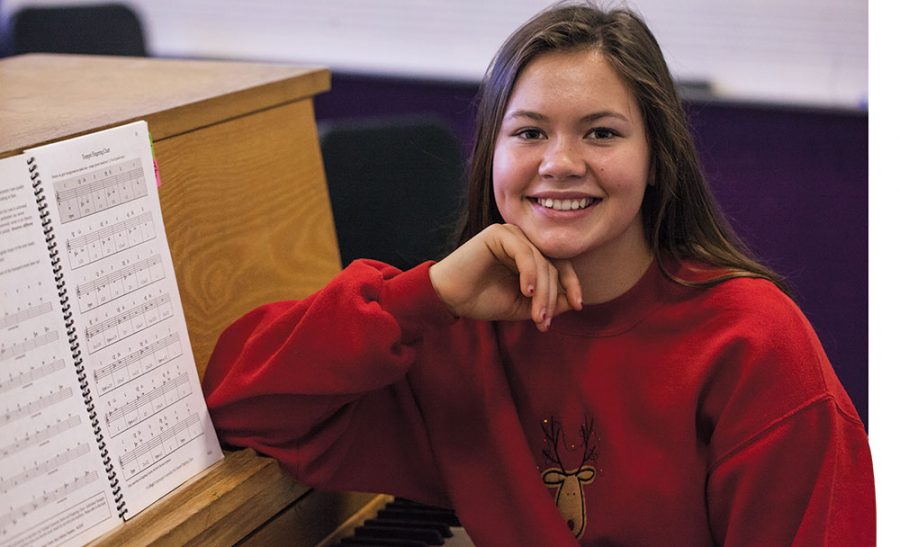“Practice makes perfect” was the first thing my piano teacher ever told me. I started lessons in the first grade, mainly because my brother did. From the moment I played my first note, I was hooked.
I listened to everything my teacher told me, except for that key phrase; I didn’t like to practice and I didn’t like to be nagged by my parents. I went to piano lessons but rarely practiced.
After seven years, I found a new teacher who focused on being a part of the music rather than the repetitiveness of technique. Through her, I no longer thought of music as “laws” I had to follow over and over again. While I still didn’t enjoy practicing, I did enjoy playing around with music.
Then came an upcoming recital. Without thinking I immediately agreed to be in the recital, and began to daydream about my performance. In a few short weeks I would have to learn and perfect the most challenging piece I’d played yet, “Moonlight Sonata.”
At the time, playing anything composed by Beethoven seemed like an honor, but after watching performances on YouTube to hear what the piece was supposed to sound like, I realized the song was 14 minutes long! Honor was replaced by fear.
Luckily, I would only be playing part of the entire song, but still, my first try was horrendous. My fingers seemed to trip over the keys and the “off pedal” marks were accompanied by wrong sharps and flats.
I tried going back to the basics, playing with just my left hand, just my right hand, then with both hands together … with no results. All I could do was practice, practice, practice and practice because this performance needed to be perfect.
In time, my fingers began to have a mind of their own. When I touched the keys, my fingers played. But, after two weeks I still didn’t have the piece completed.
The recital was in two hours. I had only made it through the piece once. Stress was all I felt. I blinked, and the recital began. The performances by other students set expectations high … very high.
I walked on stage, and with shaky hands began to play. During the first two measures I focused on technique, but because of all my repetitious practice, I quickly forgot the rules and simply felt the music. Practice had made it perfect.
Posted in: Art & Music, Youth & Teen
Comment Policy: All viewpoints are welcome, but comments should remain relevant. Personal attacks, profanity, and aggressive behavior are not allowed. No spam, advertising, or promoting of products/services. Please, only use your real name and limit the amount of links submitted in your comment.
You Might Also Like...

Helping Children Become Media Literate
What does constant exposure to media mean for today’s youth who must navigate the barrage of media in almost every aspect of their lives? What are the implications for parents, […]

Keeping the Arts Alive in Your Child’s School – How Some Schools are Beating the Budget Crisis
Research studies have shown that a strong school arts program increases a student’s self-esteem and creativity, and fosters a lifelong love of learning. But during tough economic times, it’s usually […]

Can’t We All Play in Tune? Violin Teacher Arlene Gattuso: Changing The World One Note At A Time
Nearly all children love music. “But to learn to handle a musical instrument with the proper skill,” says Arlene Gattuso of Redding’s Gattuso Violin Studio, “to be capable of making […]

Innovative Arts Programming Enhances Siskiyou County K-12 Education
“Art has an incredible ability to engage children to want to be in school. Students look forward to it, to expressing themselves. It’s hands on, its’ creative, it’s fun,” says […]




